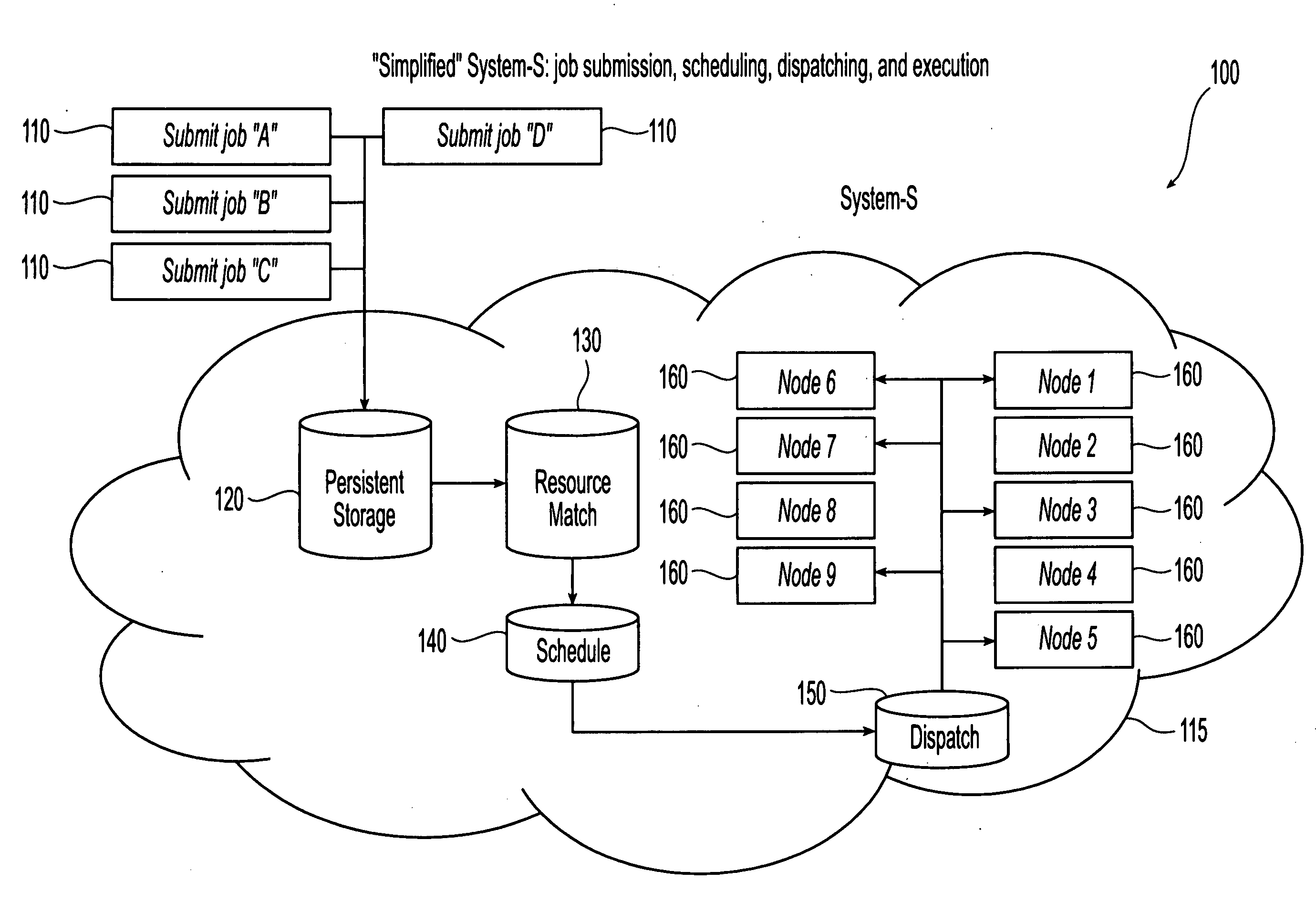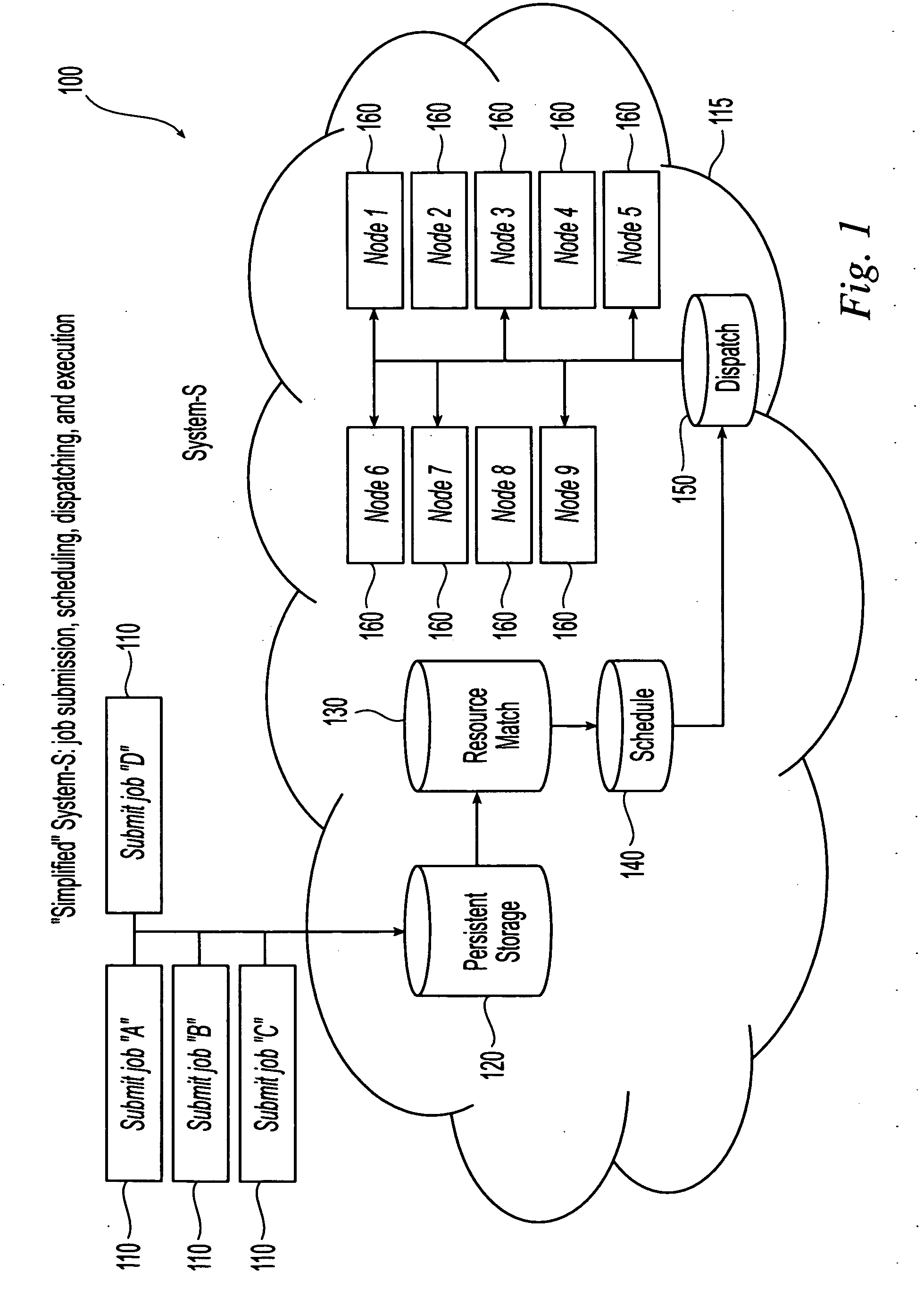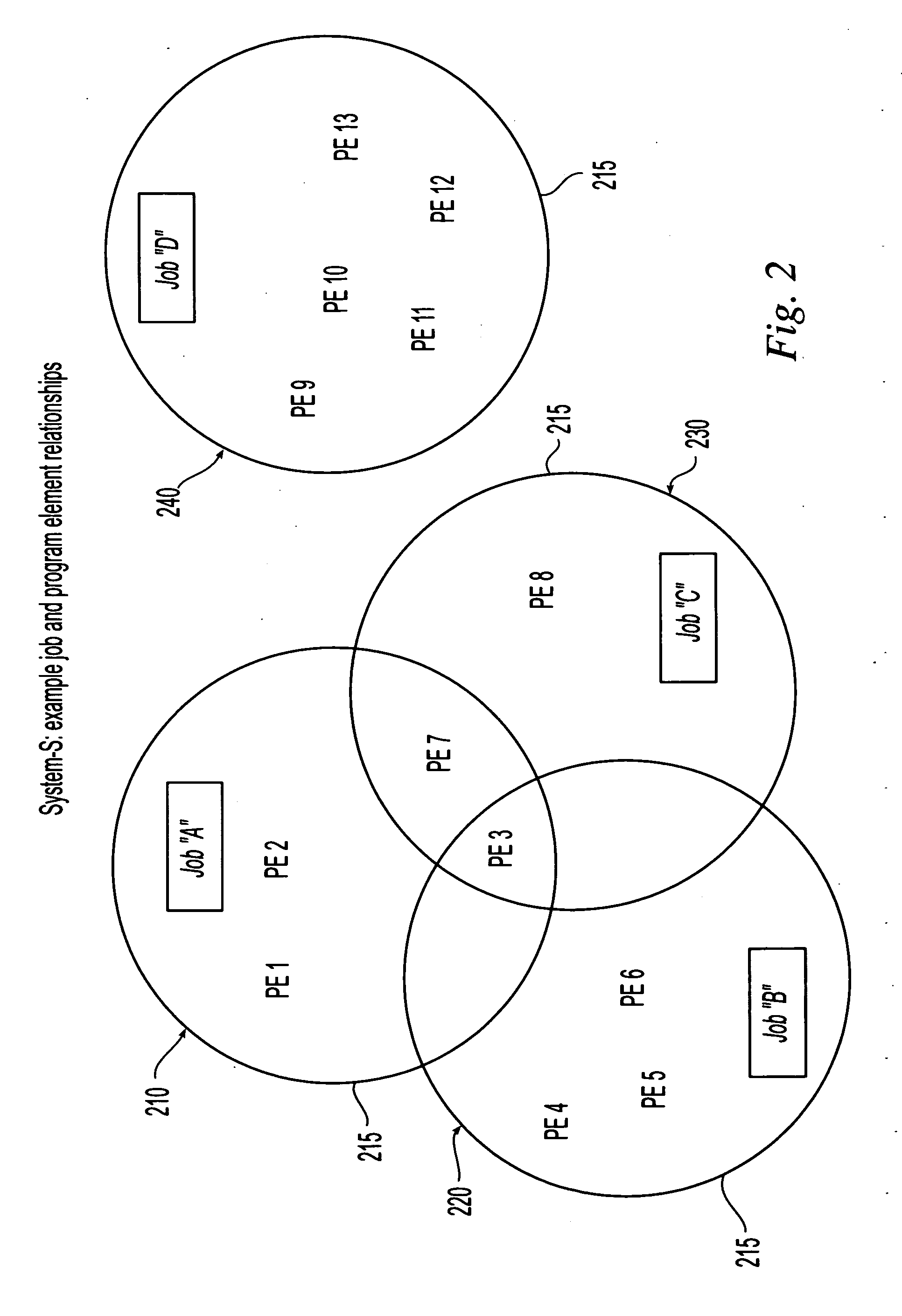Unified job processing of interdependent heterogeneous tasks
a task and task processing technology, applied in the field of information processing systems, can solve the problems of idle interactive user's system, complex and large tasks, etc., and achieve the effect of facilitating the evolution of tasks
- Summary
- Abstract
- Description
- Claims
- Application Information
AI Technical Summary
Benefits of technology
Problems solved by technology
Method used
Image
Examples
Embodiment Construction
[0027]Systems for use in exemplary methods in accordance with the present invention include processing environments containing many features arranged to enable large-scale fault-tolerant distributed computing. These systems are intended to scale to thousands of jobs composed of hundreds of components or sub-tasks running on tens-of-thousands of nodes. Among a variety of system features are features related to submission, scheduling, dispatching, execution, and processing jobs, which are referred to generally as “job management” or “job orchestration”. A given job includes a variety of components or sub-tasks. Suitable components include, but are not limited to, program elements (PEs), system tasks, other tasks and combinations thereof. A PE is a dispatchable unit that is sent to a processing node for execution, implementing an interface defining a set of characteristics for processing and filtering immense quantities of real time data. A given PE can contain constraints on the capab...
PUM
 Login to View More
Login to View More Abstract
Description
Claims
Application Information
 Login to View More
Login to View More - R&D
- Intellectual Property
- Life Sciences
- Materials
- Tech Scout
- Unparalleled Data Quality
- Higher Quality Content
- 60% Fewer Hallucinations
Browse by: Latest US Patents, China's latest patents, Technical Efficacy Thesaurus, Application Domain, Technology Topic, Popular Technical Reports.
© 2025 PatSnap. All rights reserved.Legal|Privacy policy|Modern Slavery Act Transparency Statement|Sitemap|About US| Contact US: help@patsnap.com



